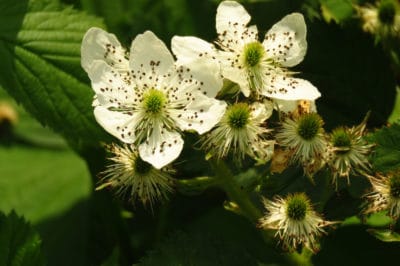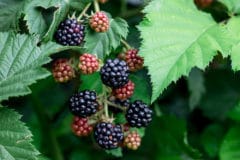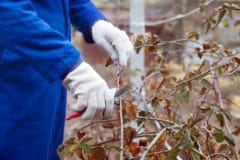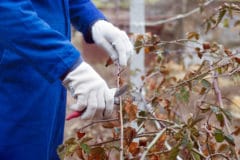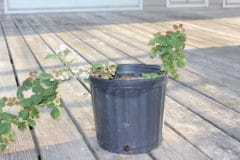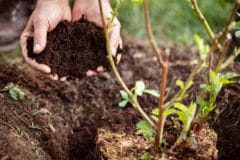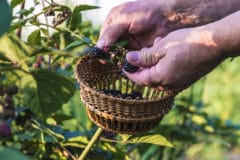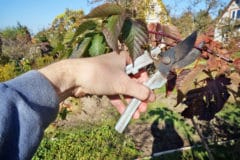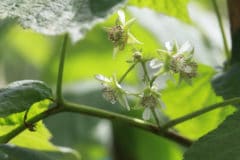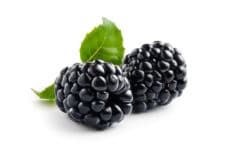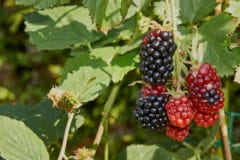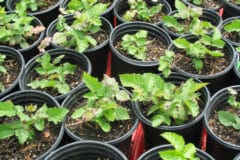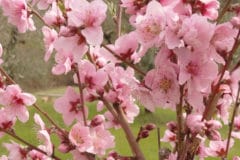How Blackberries Bloom
Blackberry canes begin developing buds in the fall of the year before their flowers bloom. The buds survive in the dormant canes over the winter. Only after they’ve experienced enough chill units — hours at temperatures between 33°and 45°F (0.55° and 7.2°C) — will the buds bloom.
Blooming Time and USDA Hardiness Zones
Where your blackberries grow in USDA hardiness zones 4 through 9 dictates when they’ll bloom. In hardiness zones 7, 8 and 9, where winter lows typically range from 0° to 30°F (-17.8° to -1.1°C), expect flowers sometime between mid-March and early May.
Cultivars suited to these zones include:
- ‘Kiowa,’ 200 chill units.
- Ouachita,’ 300 chill units.
- ‘Arapaho,’ 500 chill units.
In USDA zones 4 through 6, winter lows fall between -30° and -1°F (-34.4° and -18.3°C). Blackberry blooms usually wait until mid-to late May. Some bushes tolerating these temperatures are:
- ‘Triple Crown,’ 700-900 chill units.
- ‘Chester,’ 900 chill units.
- ‘Prime-Jim,’ 800 chill units.
Expert gardener’s tip: Blackberries planted in fall may bloom the following spring. If yours do, they’ll benefit from having their flowers pruned so they can’t set fruit. Sacrificing this first crop will let the bushes establish strong root systems that sustain larger harvests of bigger berries going forward.
Blackberry Canes and Flowers
On nearly all blackberries, five-petaled, while or pale-pink flowers bloom at the tips of branches sprouting from second-year floricanes. Their berries ripen 45 to 60 days after the flowers are pollinated.
Primocanes
Intermingled with the floricanes are greenish-yellow shoots emerging from beneath the soil. These first-year primocanes usually grow leaves and lateral branches in spring and summer and form flower buds before going dormant in fall.
But in few cases, they bloom with the floricanes in spring and fruit after them in late summer or early fall. They repeat as floricanes the following spring.
If harvesting double blackberry crops each year sounds good to you, consider planting ‘Prime-Ark 45’ (300 chill units) or ‘Prime-Ark Freedom’ (150 chill units). Both are hardy in USDA zones 5 through 8.
Expert gardener’s tip: The chill units these two blackberries get each winter trigger all their canes to bloom and fruit.
